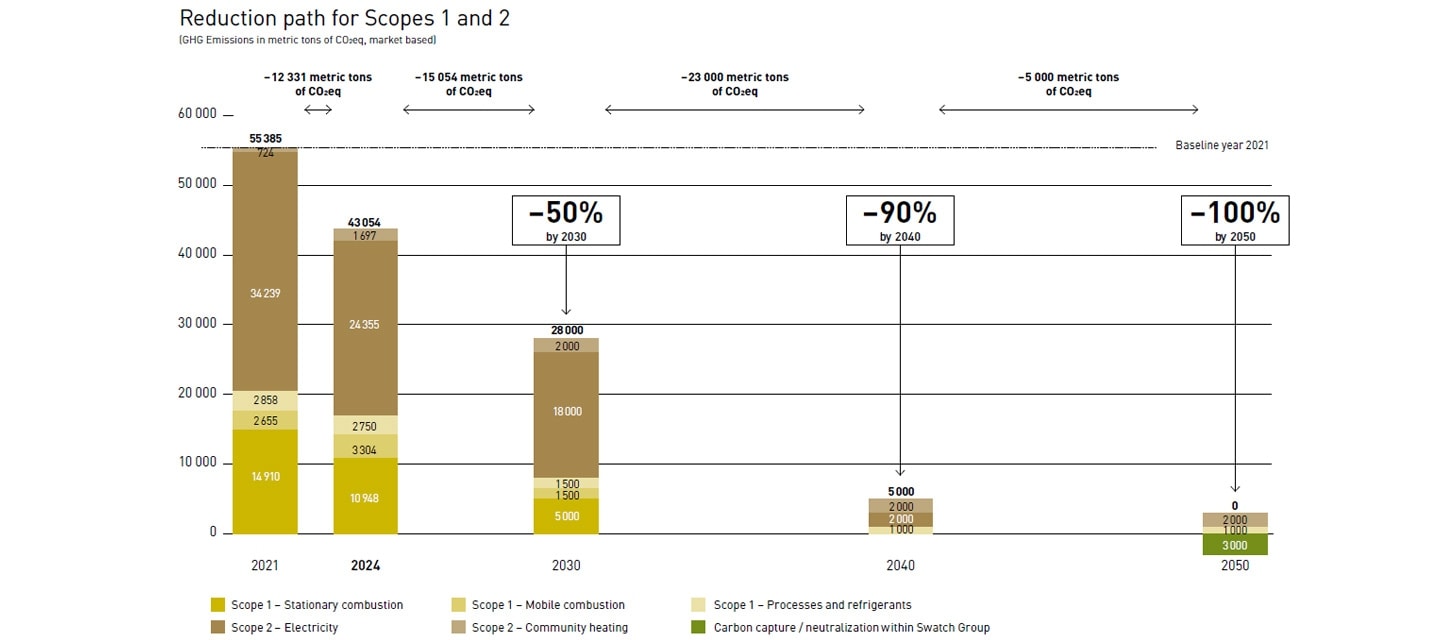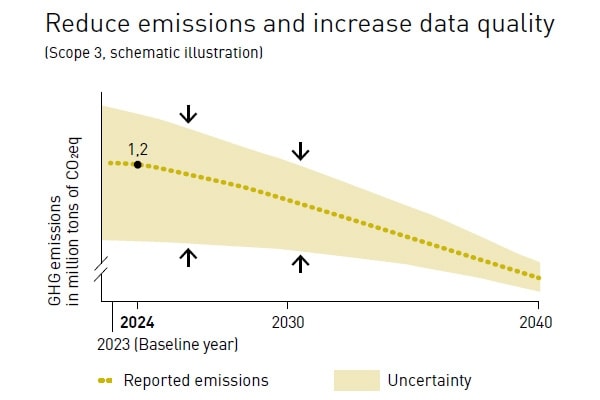Climate strategy
Compared to other industries, the watchmaking industry has low direct greenhouse gas emissions (Scope 1) and indirect emissions related to energy purchase (Scope 2).
Nevertheless, Swatch Group is committed to reducing not only its direct emissions but also the emissions across its entire value chain, including upstream and downstream activities (Scope 3).
Within this reporting period, Swatch Group has estimated its entire Scope 3 emissions. These emissions stand at around 1.2 million metric tons of CO2eq, with an uncertainty factor of + / – 0.4 million metric tons of CO2eq. The value is based on data from suppliers, emission factor databases, and published data from other industry players.
The ambition of Swatch Group is climate neutrality in Scopes 1 and 2 by 2050, with intermediary targets set on Scope 1 and Scope 2 for 2030 and 2040. A target for Scope 3 and intermediary targets for Scope 3 will be announced once a concrete action plan is ready to publish.
Greenhouse gas reduction targets and measures
| Scope 1 | Target | Measures |
| Stationary combustion |
|
|
| Mobile combustion |
|
|
| Processes & refrigerants |
|
|
| Scope 2 | Target | Measures |
| Electricity |
|
|
| Community heating |
|
|
| Scope 3 | Target | Measures (planned) |
|
|

Roadmap for reducing Scope 3 emissions
A roadmap for reducing Scope 3 emissions is currently in development. Work in connection with Scope 3 currently has two main focuses. First, data quality will be improved in order to better determine the priorities, and second, emissions will be continuously reduced through specific projects and measures. Swatch Group is also aiming for the actual elimination of emissions in the case of Scope 3 emissions.
Further extensive analyses were carried out in 2024 in order to improve the measurement of Scope 3 emissions, particularly category 1, which has the greatest impact on the carbon footprint. For example, the Group analyzed the sourcing of materials, components and services by Group companies in order to create calculation models, taking account of emission factors on the basis of activity data in all areas where this makes sense. As a result, the Group can determine its 2025 emissions more precisely and, above all, develop and implement plans for measurable actions and define the path to achieving the reduction targets more precisely.
Climate-related risks and opportunities - Strategy
Swatch Group needs to tackle climate-related risks in the short-to-medium term (0–5 years, 5–15 years). These risks may vary significantly depending on the implementation of the Paris Agreement by the countries. The transition may cause operational and procurement costs to rise. Physical risks could present a greater risk to the procurement of raw materials in the long term (longer than 15 years).
Changes in supply and demand as consumers opt for sustainable alternatives can be viewed both as an opportunity and a risk.
